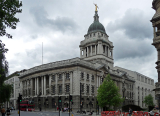
The one-off payment recognises the hard work of staff and is part of the highest pay increase for the Civil Service in 20 years.
In April this year, the Civil Service pay remit guidance allowed departments to award a 4.5% pay increase for staff, with the potential for an extra 0.5% increase for lower paid staff.
The positive development in pay follows a constructive meeting with unions, who met the Minister for the Cabinet Office, Jeremy Quin, today.
Minister for the Cabinet Office Jeremy Quin said:
We are determined that civil servants are rewarded fairly for the vital work they do across the country, in delivering the Government’s agenda and providing services to the general public.
I am pleased with the constructive engagement we have had with Civil Service trade unions, and to be announcing that departments will be allowed to make a £1,500 payment to every member of staff at Grade 6 and below.
This is both fair to the taxpayer and a recognition of the financial pressures civil servants have faced over the last year.
Employers making such payments will take the usual steps necessary to do so, including in relation to discussions with their relevant trade unions, with the aim of finalising any decisions as soon as possible.
The non-consolidated payment takes into consideration fairness to the taxpayer and the requirement to support the promise to halve inflation this year.
The payment will apply to the current financial year’s pay.
The one-off payment will apply to staff working in non-Senior Civil Service grades. Senior staff pay is set separately as part of the Senior Salaries Review Body process.
As part of the positive engagement between the government and unions, the government has also agreed today to continue the ongoing consultation on the Civil Service Compensation Scheme, but not take any action or make any changes to it before 2025. The government remains committed to reform and recognises the importance of getting any reforms right and managing their introduction.
You can read more here.
Photo by Richard Townshend, Wikimedia commons.



































